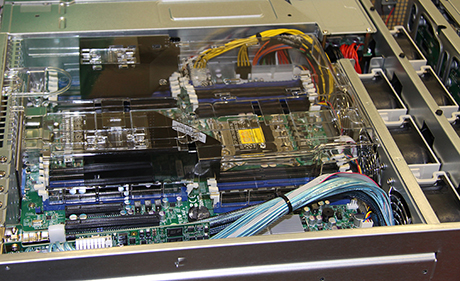Fiber networks built with multifamily properties in mind offer network resilience while maximizing ROI for owners and operators. Well-constructed fiber networks are at the heart of meeting and exceeding residents’ growing Internet needs, especially when work-from-home culture and the constant need for online connection have made Internet slowdowns and downtime unacceptable for end users. Fiber can also strengthen connectivity across multifamily properties, shoring up the Wi-Fi services residents have come to know and on which they’ve come to depend.

Michael O’Linc,
Pavlov Media
How does a national fiber network integrate with multifamily properties? By focusing just on the needs of the multi-dwelling unit (MDU). “Instead of building out 200-mile routes of duct and fiber, we build out ‘miracle miles’ in densely populated MDU areas. From that point, we’re able to easily grow or expand out from that area,” says Michael O’Linc, president of fiber services & campus communications at Pavlov Media.
O’Linc stresses the importance of a more planned, methodical approach for MDUs. A network that serves multifamily buildings must be a network focused on backups and fail safes. The “miracle mile” method creates a main line with laterals — creating a ring shape as it expands. This approach to fiber makes networks easier to maintain and creates built-in redundancies. A primary path and a redundant feedback path together are the ideal approach, a backup plan that saves on downtime if one of the paths is ever cut.
Within the building itself, companies should install fiber with aesthetics in mind. A unified approach to providing fiber means that residents have access to a fiber connection in their apartment and have Ethernet and Wi-Fi directly connected to the fiber. Residents can rely on corded connections rather than competing with fellow residents for Wi-Fi bandwidth.
Growing Resident Needs
Pavlov’s approach to providing Internet for multifamily starts by determining what owners and operators need. Residents’ needs define the network overlay. Do residents need strong Wi-Fi that lets them roam across the entire property or do they only need to be connected in their individual units? What size circuit is necessary if the property needs 10-, 40- or even 100-gigabit speeds?
O’Linc explains that for both of these questions (how much Wi-Fi access is needed and what download speeds are required), the answer is increasingly “more is better.” Owners and operators are seeing an exponential increase in the need not just for strong internet, but speeds and reliability that can only come from fiber. A 2022 report from broadband technology provider OpenVault found that consumer bandwidth demands had more than doubled in the years from 2017 to 2021, from 202.6 GB per user to 536.3 GB for users in 2021. These bandwidth needs are only likely to increase as residents rely more on their Internet to work from home, stream and game.
Faster Access
With a national fiber network, sophisticated residents can expect better speed. “A national fiber network can actually provide access to content faster than some of the larger carriers,” explains O’Linc. Peering locations allow faster connections to content providers — meaning that the connection to content travels directly from one network to the other, rather than pinballing through network after network after network.
“We’re trying to bring our content ‘closer’ to the resident, with fewer ‘hops’ on the way to the network where the content resides. This helps reduce latency, the real measure of speed,” says O’Linc. “With more resident demand and fiber as the preferred approach for the ideal online experience, it’s important to build these networks so users have exceptional speed and experiences.”
The Future of Internet Access
Electronics are struggling to keep up with the advancements in Internet speeds. Wireless access points (AP) (devices that create wireless networks) and other Wi-Fi technologies need to be totally replaced every half decade as demand and speeds increase.
“But with fiber, it’s only the optics and equipment that needs to be changed. So, upgrading is quick and easy — it just requires changing out the optics in your network equipment or updating your bandwidth profile to make your speeds much faster.”
While end-user reliance on Wi-Fi for mobile devices will never go away, dependable fiber service can improve overall Wi-Fi service. If residents can rely on Ethernet connections, MDUs can minimize Wi-Fi traffic and congestion. Wi-Fi’s bandwidth is limited, but fiber can form a reliable backup with connectivity close to the speed of light (since fiber optics work by transmitting data through light).
Vertical Integration Decreases Downtime
O’Linc explains that Pavlov’s vertical integration approach generates a centralized plan for serving residents and operators. From engineering to permits to drill crews to support and maintenance, “we can reduce costs at every stage and make everything more streamlined and efficient throughout the process.”
Pavlov’s holistic approach to connection means that they can build a reliable network without having to depend on outside companies to keep things up and running smoothly.
Pavlov Media is a content partner of REBusinessOnline. For more information on Pavlov Media, click here.


